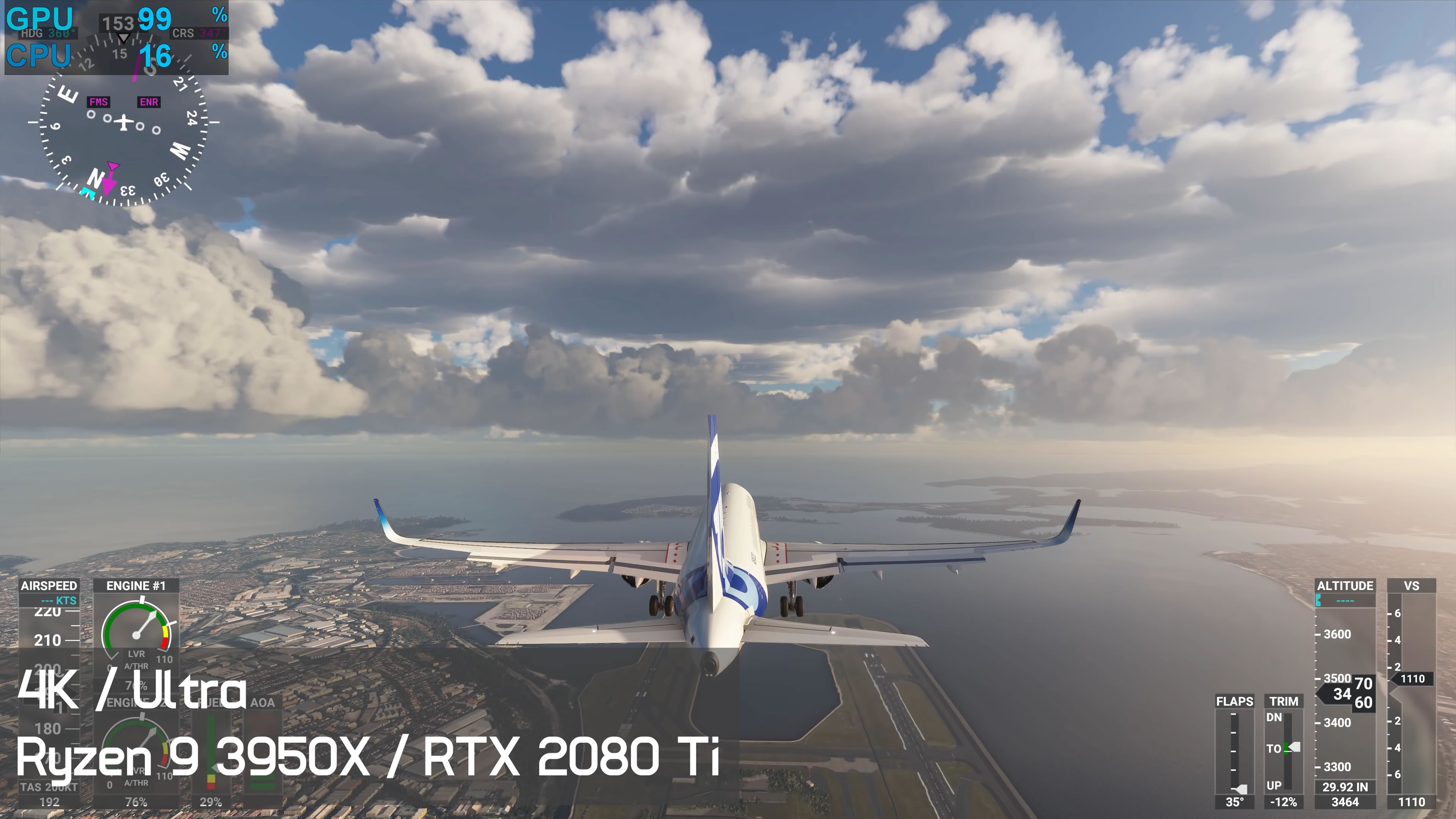

Using the same sectional overlay, look just northeast and find Manatee Airport, which is a typical grass strip. Type “Bishop Harbor” into the “Fly To” search box.

You can even add in 3D buildings (under “Layers”), which will show you what downtown will really look like. Shift back and forth between Google Earth and the overlaid sectional to compare notes. Now you can see exactly what an arrival will look like. You can see your current eye height in the bottom right corner of the Google Earth screen. (For keyboard help, click on “Help,” then “Keyboard Shortcuts.”) You’ll also need to use the tool with the hand on it to create the right perspective of an arrival from the east. Next, use the shift and down arrow keys to adjust the “altitude” of your view. Use the navigation tool at the top right of the screen (the one with the eyeball on it) to rotate the image so that west is at the top of the screen or straight ahead (and north is facing to the right, as indicated on the eyeball tool). Using Peter O Knight, let’s say you’re planning to arrive from the east. You can adjust your vantage point in Google Earth to match the direction from which you’re flying and even approximate the view from your proposed cruise altitude. Once you’ve seen what it and the surrounding areas look like, it will be rather hard to miss.īut it gets even better. Never been to Peter O Knight before? Take a look and check it out. It will allow you to compare what the sectional shows with what you can really expect to see from the air.

This allows you to “fade” the sectional overlay. At the bottom of the “Places” box (underneath the sectional chart names), you’ll see a sliding scale. As long as you have “Roads” selected under “Layers,” major roads and their names/designations will still appear through the sectional chart. You should see Tampa International Airport, Vandenberg Airport, MacDill AFB and Peter O Knight Airport. Next, click on “Sectionals,” which will overlay the whole gamut of sectional charts on top of the Google Earth satellite imagery. If you’re not sure where that is, just type “Tampa” into the “Fly To” box in the Google Earth sidebar. Now that the overlay data is loaded on your computer, let’s look at how it can make your life tremendously easier when planning a flight. They should not be used for purposes of actual navigation!) (Keep in mind that none of these charts or overlays can be considered current. Three-dimensional airspace can be added so that you can view what Class B or C airspace will look like from any angle or altitude. The same applies to terminal area charts. If you have the latest sectional data and an updated version of Google Earth, when you click on “Sectionals,” every sectional chart will be superimposed on the correct spot. The last three options are the most interesting: sectional charts, terminal area charts and 3D airspace. There’s an “About” item so you can learn more on the overlay feature. Within the aero chart folder there are four options. Additionally, they can familiarize themselves with unfamiliar airports, checkpoints and destinations with this invaluable flight-planning tool. Google Earth allows pilots to visualize terrain, buildings and weather, among other things, over sectional charts. (Because it’s frequently updated, be sure that you have the latest version.) Next, log on to (Type this address exactly as it appears here if you lowercase the “A” in “Aeronautical” or capitalize the “i” in “in,” the link won’t work.) Scroll down to “Sources and Citations,” and click on “Sectional data download.” Once the sectional data has downloaded, you should see a folder labeled “Aero Charts” under “Places” in the Google Earth sidebar.Īn uncontrolled airport near Crawford, Colo. Best of all, it’s free!ĭownload Google Earth at. Now, before you even get in the airplane, you can use sectional chart overlays on Google Earth to show you exactly what to expect on a flight.

But it doesn’t have to be that way anymore. Even with the fanciest GPS units guiding you, it can still be hard to identify certain things from the air. Try finding some obscure grass strip down south-it’s like looking for a needle in a haystack. Flying in unfamiliar territory and into strange new airports can be quite a task, primarily because you’ve never seen the scenery before. After a few moments of panic and rechecking of numbers, I looked down, and (aha!) there it was.Īnyone who has flown long enough can appreciate how this type of scenario can happen. The time to my last waypoint, the destination airport, had expired, yet the field was nowhere in sight. To this day, I can remember a rather “interesting” experience that occurred on a long solo cross-country while I was pursuing my private pilot license (almost 20 years ago).


 0 kommentar(er)
0 kommentar(er)
